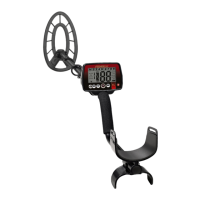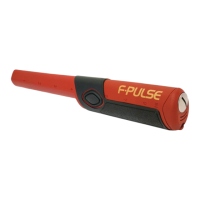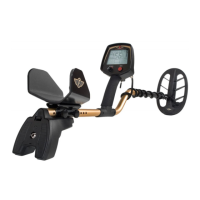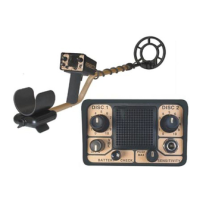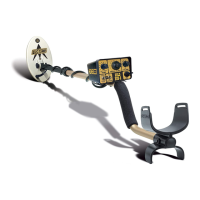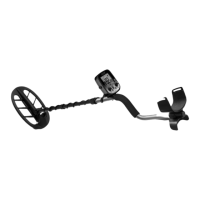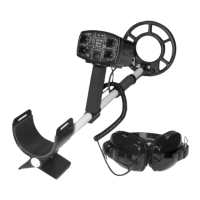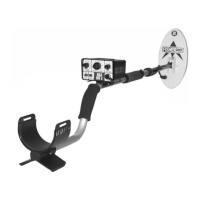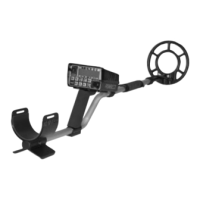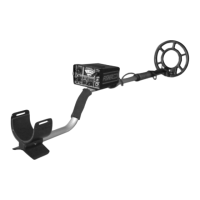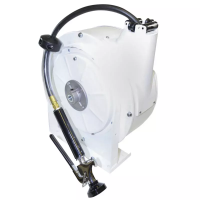CONTROL KNOBS:
1. OFF/ON/GAIN
a. Click right to turn on. Click left to turn off.
b. Turning the knob clockwise increases the detector’s sensitivity; the
higher the sensitivity, the deeper targets will be detected, and the more
likely the detector will be to detect very small targets.
c. As you turn the knob, notice that the GAIN value at the bottom-right of
the screen displays your current sensitivity setting.
Sensitivity in DISC Mode
The left knob is labeled “GAIN” and in DISCRIMINATION Mode it alone
controls the sensitivity of the detector.
GAIN in ALL METAL Mode
In All Metal Mode, GAIN increases as you rotate the knob clockwise.
THRESHOLD is controlled independently using the right knob.
2. DISC / ALL METAL / THRESHOLD
a. Click knob to the far-left “DISC” position and the detector enters
DISCRIMINATION Mode.
b. Click on clockwise to operate in ALL METAL Mode.
c. In ALL METAL Mode, rotate knob to change the threshold.
Threshold values range from -40 to +40.
In ALL METAL Mode, the Threshold control can be used in two ways.
Control knobs continued on next page
28
GOLD PROSPECTING
Gold Prospecting continued on next page
In the United States, gold is commonly found in the western
states, Alaska and in a few localities in the Appalachians.
Hillsides are the best areas for gold prospecting
using a metal detector, because hillsides cannot
be cleaned out by panning and dredging the
way streams can. Also, gold on hillsides,
not far from its source vein, tends to be
larger and more readily detected, than
alluvial (placer) gold, which tends to
get pounded to pieces and worn
away as it rolls along the
streambed. Even in a good
gold producing area,
detectorists often spend an
entire day without finding any
gold, but will dig bits and
pieces of other metal such as
birdshot, bullets and rusted tin
cans, etc. Another nuisance can be “Hot Rocks” - rocks containing
concentrations of iron oxides that sound like metal when passed over with the
detector. Discrimination is usually ineffective because the loss of sensitivity
resulting from discrimination is enough to make the little nuggets invisible.
Because most gold nuggets are tiny, and are usually found in soil which is
high in iron oxide minerals, serious gold prospecting requires a detector with
high sensitivity and true ground balanced All Metal operation. Set the detector
with the sensitivity high enough to hear some noise from ground minerals, and
learn the language of the sounds you hear. Headphones are recommended
unless there are safety issues (for instance rattlesnakes). Move the searchcoil
slowly and deliberately, carefully controlling its height above the ground to
minimize noise from iron minerals in the soil. If you hear ground noise, the
Ground Balance setting could be off, so perform the ground balancing
procedure again. The ground geology typically associated with the presence
of gold will tend to change over very short distances.
The Fe
3O4 bar graph indicates the amount of iron mineralization in the soil. In
most gold fields, especially alluvial deposits, gold tends to be associated with
iron minerals, especially magnetite
black sand. Therefore, to maximize gold
recovery, concentrate on areas where the bar graph indicates higher amounts
of iron mineralization.

